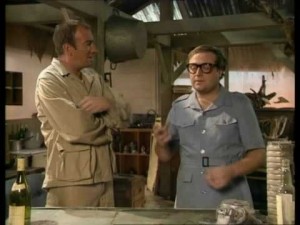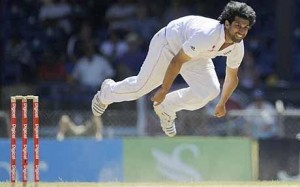
A gradual but inevitable descent into cricket-based loathing and bile.
The 51allout Bargain Basement Book Bonanza: Don Bradman’s ‘Farewell to Cricket’
It’s not often that 51allout finds itself in an antique book store. But on a recent excursion (looking for whisky shops in Yorkshire), we stumbled upon a magical place stuffed to the brim with festering, motheaten classics. Most actually were ‘classics’, insofar as they pertained to ancient mythology – a subject quite literally all Greek to us – so we quickly hunted out the shelf marked sport and found, among the old books about to how to improve your tennis strokes, one by The Don. Feeling flush, having not spent any money on whisky yet, we took it home and set upon reading it accompanied by a large bottle of Talisker.
And boy are we glad we did! For it contains, right on page one, one of the great anecdotes.
“The first time my name appeared in a newspaper was about 1921 when this paragraph was published in a New South Wales Journal called Smith’s Weekly:-
‘Bounding Ball. Saw a curious thing at a junior cricket match at Bowral recently. Don Bradman (crack ‘bat’) sent a ball over the boundary fence. It struck half a brick, rebounded onto a fence post, poised there for an appreciable time, and ran along the top of the palings the whole length of a panel if fencing before descending outside the boundary. – John.’
Curiously enough, the story was perfectly true, but what a coincidence that some twenty years later my own son, now at school, should be called John. His parents were not influenced in their choice of names by the writer of the paragraph.”
John! Fucking Christ alive – we went to school with a guy who incredibly was also called John! And nor was his name influenced by an article in a newspaper.
Obviously Bradman remains a legendary figure today. 99.94 is one of the most famous stats of any sport, anywhere in the world. But it’s nice to rediscover just how impressive a batsman he was; so good that he can toss his scoring of 304 runs in an innings aside as “at last I had returned to something approaching my best form.” And the colossal totals just keep on coming, almost to a point where it becomes sickening.
The book seems rather quaint, both in the recollection of the cricket itself and also the life off the field. Bradman often recounts jokes, gags and quips that are timider than an introverted kitten:-
“An amusing interlude was provided by a close study (at Windsor Castle) of the suits of armour worn by earlier kings. Our boys were agreed that they would have been the ideal answer to body-line except for one important proviso – you couldn’t very well play cricket mounted on a horse.”
The Second World War is mentioned only briefly, which seems odd from today’s perspective but is perhaps not surprising for a book written when it was barely history. The anecdotes are more regular. In the early stages of his career there was a tour to North America, which included a game whereby one umpire called six-ball overs, the other eight-ball ones. There are consecutive matches in Canada that feature respectively balls turning unexpectedly off grasshoppers sat on a good length and bails slowly falling to the earth due to being held in place atop the stumps with chewing gum. Sid Barnes gets struck by a ball on the ribs but develops a black-eye. And so it continues.
The structure of the book – strictly in chronological order and more-or-less a series per chapter, means the narrative at times is pretty dull – something not helped by Bradman devoting an entire page to describing a vase that was presented to him on his final tour in 1948. Bodyline understandably gets a detailed chapter of its own and it is interesting to read again about that infamous series.
Overall, there’s no real need to read this book. But what it does is compel the reader to go and look through the record books and the scorecards. The list of Bradman’s innings in the appendix are eye-openingly Devereuxesque – it’s page after page of dazzlingly high scores (often scored at a very high tempo too). The book is a fairly interesting historical artefact, but importantly it reinforces just how bloody good he was. It would be wrong to call him legendary, for his statistics are set in stone. It would be wrong to call him a genius – that underplays the amount of practice he put in as a youngster. So we’ll settle on John’s description – a crack bat indeed.




1 Comment
Post a Comment
1
Oliver
07 Jan 2015 22:45
I went to school with a guy called John too. No idea where the parents got the name from.